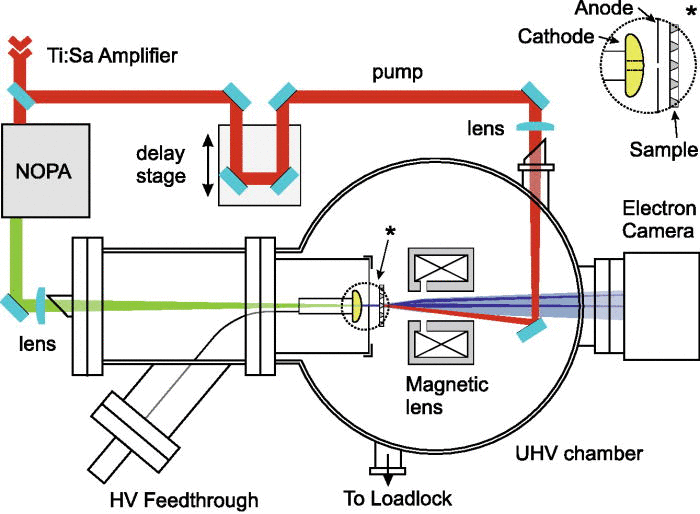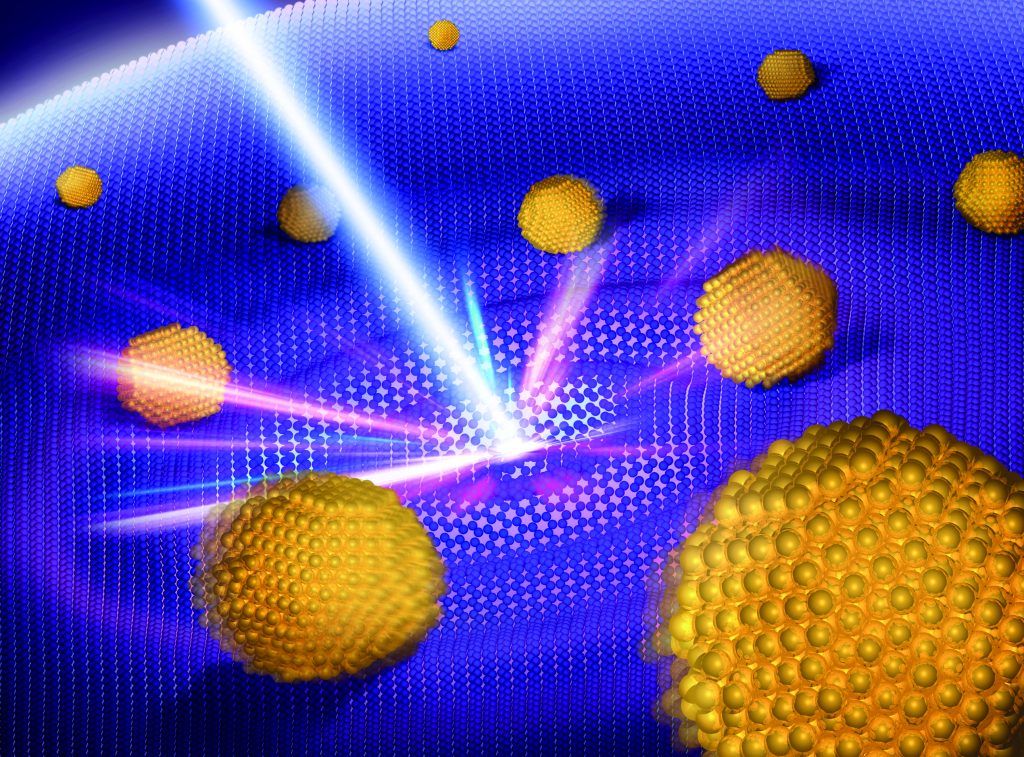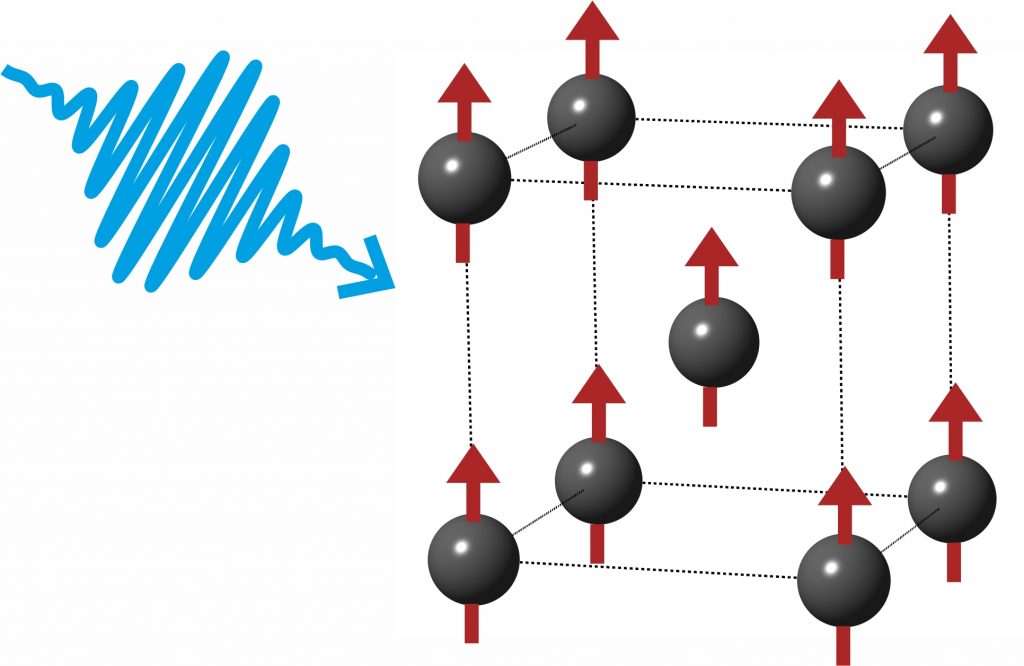The setup

We developed a highly compact femtosecond electron diffractometer working at electron energies up to 100 keV. The electron pulse propagation through the setup was simulated with a multi-body particle tracing code (GPT, Pulsar Physics) in order to estimate the electron pulse durations at the sample position. Our simulations show that electron bunches containing few thousands of electrons per bunch are only weakly broadened by space-charge effects and their pulse duration is thus close to the one of a single-electron wave packet. With our compact setup, we can create electron bunches containing up to 5000 electrons with a pulse duration below 100 fs on the sample.
The setup was described in a publication, which you can access here.
Nonequilibrium Phenomena in Nanoscale Heterostructures

A central goal of nanotechnology is the precise construction of nanoscale heterostructures with optimized chemical, physical or biological functionalities. Function stems from structure but, in addition, function always involves nonequilibrium conditions and energy flow. The central topic of this project is to study energy flow and structural changes in nanoscale heterostructures on ultrafast timescales.
See our latest publications on this topic here.
Electron-lattice interactions in ferromagnets

After excitation with an ultrashort laser pulse, the 3d-ferromagnets (nickel, iron and cobalt) demagnetize on a timescale of few hundreds of femtoseconds. This ultrafast spin response has intrigued researchers since its discovery in 1996 and the underlying mechanisms are still debated. To gain more insight into the dynamics of a ferromagnet after photoexcitation, it is necessary to m the different subsystems: spins, electrons and lattice. With time-resolved high energy electron diffraction, we study the evolution of the lattice. We compare the experimental results to ab-initio calculations of the electron-phonon coupling in combination with a two-temperature model, which allows us to draw conclusions about the energy flow between the three different subsystems as well as between majority and minority carriers.